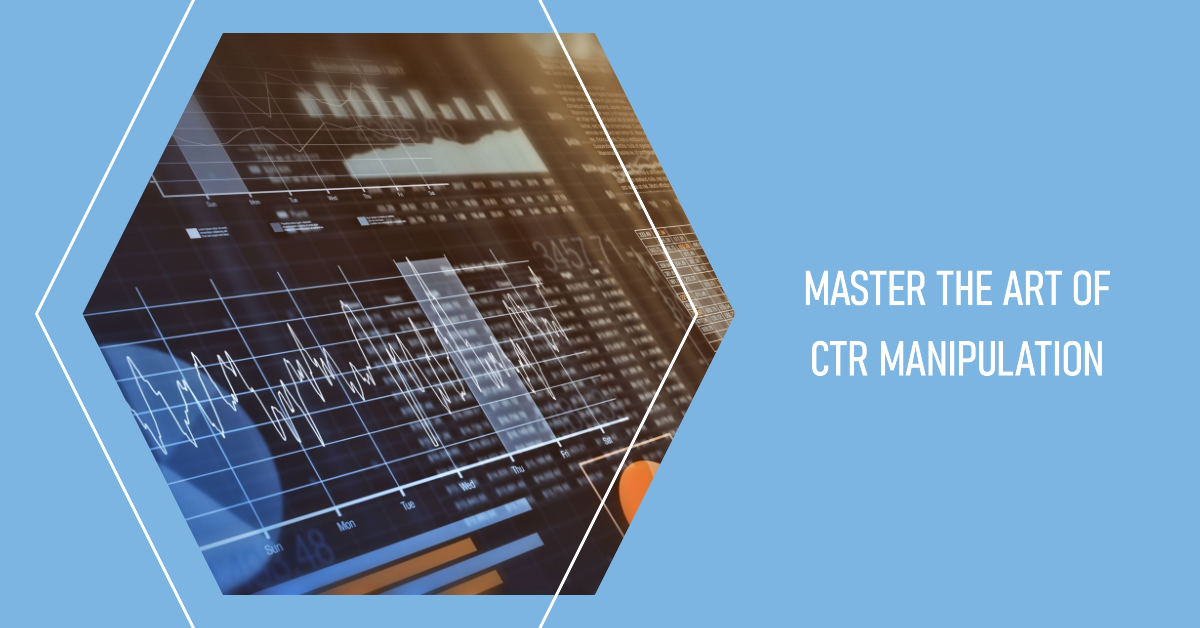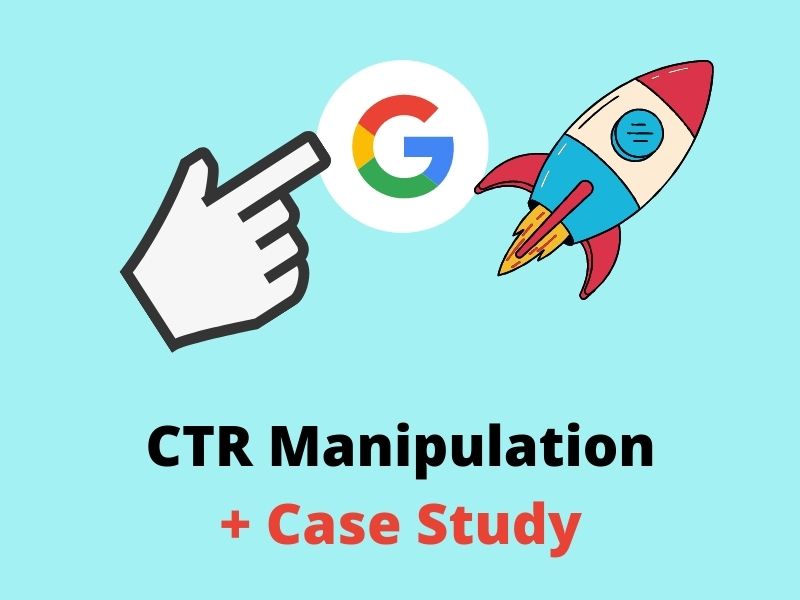CTR Manipulation: A Video Game Changer for Digital Projects
The surge of CTR manipulation has unquestionably changed digital advertising and marketing methods, supplying marketing experts with devices to boost involvement and drive web traffic effectively. Strategies such as A/B testing and personalized web content have actually verified to yield considerable improvements in click-through rates. Nonetheless, as brand names increasingly leverage these techniques, the honest ramifications of such practices require analysis. Stabilizing the quest of maximized metrics with the demand for genuine target market connections postures an essential difficulty for marketing professionals today. What implications might this stabilizing act hold for the future of digital campaigns?
Comprehending CTR Manipulation
Although click-through price (CTR) manipulation might appear like a simple technique in digital marketing, it includes an array of strategies focused on artificially pumping up involvement metrics. This manipulation can take different kinds, including using click ranches, crawlers, or deceptive ad positionings that misguide consumers into clicking. These approaches can compromise the honesty of performance information, making it testing for marketing professionals to evaluate the authentic performance of their projects.
Furthermore, CTR control elevates moral problems, as it weakens the openness of electronic advertising and marketing. The reliance on inflated metrics can result in misdirected advertising and marketing decisions, skewing resource allocation and campaign techniques. Organizations might spend greatly in channels and techniques that show up effective but do not generate actual involvement or conversions.

Benefits of Click-Through Price Optimization
Enhancing click-through rate (CTR) is necessary for improving the efficiency of electronic advertising campaigns. A higher CTR shows that a larger percentage of individuals are engaging with the web content, which can lead to boosted site web traffic and far better conversion rates. By enhancing CTR, brands can effectively assign their advertising resources to campaigns that produce the greatest returns.
Among the key benefits of CTR optimization is the potential for enhanced advertisement positioning and reduced expenses - CTR Manipulation. Systems like Google Advertisements award higher CTRs with better advertisement positioning and lowered cost-per-click (CPC), allowing online marketers to extend their spending plans additionally. Additionally, a well-optimized CTR can improve brand name exposure, as higher interaction prices typically correlate with enhanced organic reach

Techniques for Reliable CTR Control
To effectively manipulate click-through prices (CTR), marketing professionals can utilize a variety of tactical techniques that boost user interaction and drive traffic. One have a peek here fundamental method is maximizing advertisement copy to create engaging and action-oriented language. CTR Manipulation. Using solid call-to-action (CTA) expressions urges customers to take prompt activity, increasing the possibility of clicks
Another efficient method is A/B screening, which allows marketing professionals to contrast various ad variants. By methodically analyzing performance metrics, they can recognize which components resonate best with the target market, consequently refining their strategies for optimal effect. Additionally, leveraging aesthetically attractive graphics and succinct messaging can catch interest swiftly, making it extra possible that users will involve.

Finally, optimizing touchdown pages to make sure a seamless individual experience can minimize bounce prices and motivate further interaction, eventually promoting higher CTR. By integrating these strategies, marketing professionals can properly adjust CTR to accomplish their project objectives.
Determining Success in Digital Campaigns
Determining success in electronic campaigns calls for a clear understanding of vital performance indications (KPIs) that align with campaign purposes. KPIs act as quantifiable metrics that assist assess the efficiency of numerous methods utilized throughout the campaign. Typical KPIs consist of click-through prices (CTR), conversion rates, expense per purchase (CPA), and return on financial investment (ROI)
To efficiently measure success, it is important to establish specific, quantifiable goals first of the project. If the main purpose is to enhance brand name understanding, metrics such as perceptions and involvement prices might be focused on. On the other hand, projects concentrated on straight sales would gain from a more comprehensive analysis of conversion rates and income generated.
Routine analysis of these KPIs makes it possible for marketing experts to make data-driven decisions, maximizing their methods in real-time. Making use of analytical devices can aid in tracking performance and determining patterns, permitting for quick adjustments to improve project outcomes. Ultimately, a thorough click here for more info approach to measuring success not only highlights locations for improvement however also reinforces the overall efficiency of digital marketing efforts, driving sustained growth and engagement in the lengthy term.
Future Fads in Digital Marketing
Expecting the future of digital marketing discloses a landscape shaped by fast technical advancements and transforming consumer actions. As man-made knowledge and maker learning proceed to progress, marketers will progressively take advantage of these modern technologies to personalize campaigns at an extraordinary scale. Anticipating analytics will allow brands to expect client demands, optimizing ad positionings and content delivery in genuine time.
Furthermore, the rise of voice search and smart gadgets is transforming how customers engage with digital content. Marketers will need to adapt their approaches to guarantee exposure across several platforms, consisting of voice-activated assistants. This change requires a focus on conversational marketing, highlighting interaction with dialogue instead of typical marketing methods.
Furthermore, personal privacy issues are motivating changes in information collection practices. Openness and honest data use will come to be vital, driving brand names to foster trust fund and commitment amongst consumers. The ongoing evolution of social media platforms will certainly also affect marketing techniques, with a heightened focus on credibility and user-generated web content.
Verdict
In recap, CTR control stands for a significant development in electronic advertising and marketing strategies, using instant benefits through boosted interaction metrics. The ongoing advancement of digital advertising and marketing will depend on this delicate interaction, shaping the future landscape of brand-consumer communications.